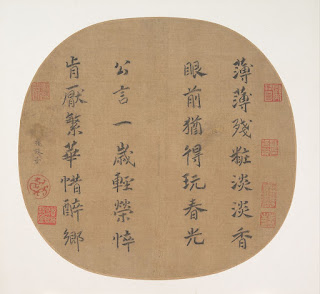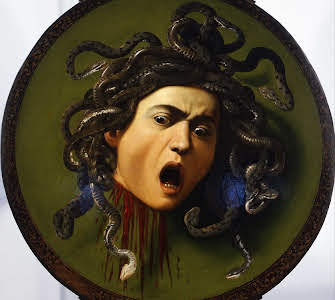Post Modern Art Blog
Post Modern Art Blog
Women’s Movement – Feminist Art Movement
(1960-2000)
I really enjoyed the choice in this week's assignment, I chose to go with the Post Modern Era (1960-2000). During this time period, we see many movements that carried from the Mid Modern Era into the late 20th century including, The Civil Rights Movement, the Women’s Movement, the war, and a lot more I'm sure. This was a time of continued growth, expansion, and many forms of conflict as one of the biggest conflicts of this time was equality, for both African Americans and women. I wanted to focus on the growth and expanding the rights of women. Sadly it was common to see women as sexualized objects incapable of doing the job a man could. Some common problems women faced were mockery, unequal pay, and working rights. With limited access to services such as child care and abortions. Luckily, things began to shift during the Post Modern time period; women became more politically involved and demanded equal pay and rights.
Most artists were white males and were often responsible for sharing their views of current events through artistic representation. However, during this time there was an influx of diverse artists ready to share their view of the world. Women were amongst this increase in diverse artists and were responsible for helping expand ideas on artistic technique and interpretation. The Feminist Art Movement emerged in the late 1600s and was pushed for by women who wanted to break the male-dominated artistic visions and create a time and space where women's stereotypes could be broken (“Underappreciated Women Art Pioneers of the ’60s”).

- Title: Earth Birth
- Artist: Judy Chicago
- Date: 1983
- Location: The Brooklyn Museum, New York (creation location unknown)
I chose to go with Judy Chicago a Feminist Art Movement artist who focused on the power of birth and womanhood. She recognized the lack of female representation, specifically birth as part of a woman’s experience, and decided to start her own collection called the Birth Project (“Underappreciated Women Art Pioneers of the ’60s”). Earth Birth is a very strong, yet vulnerable feel to it, and I love it! It's so powerful and true. The first art element I noticed was the shape of the woman, it was very sharp and curvy in the places needed to express womanhood. The second element that caught my eye was the subtle use of the color yellow. I believe the artist use these yellow hues to highlight the important features such as the womb, breasts, the woman’s mouth which I interpreted as her soul, and the sun behind her in the upper right corner. Lastly, I noticed the overall use of space in this piece. Every inch of this piece is filled with fluid, flowing lines and different shades of blue. I think this creates a very full and wholesome feel.

- Title: Birth Trinity
- Artist: Judy Chicago
- Date: 1985
- Location: The Brooklyn Museum, New York (creation location unknown)
Birth Trinity is another piece from Judy Chicago’s Birth Project. This tapestry follows the theme of birthing and the female experience. This piece, as well as her other pieces from the Birth Project, give a stronger representation of women in the art world and brought us a little closer to equality amongst men and women. During this time period, women were still fighting for equal rights, and in some ways being represented in the art world. In this piece, there are three figures, one of which is a woman giving birth. I feel a great sense of power and importance when I look at this artwork.
- Title: Up to and Including her Limits.
- Artist: Carolee Schneemann
- Date: 1973-76
- Location: Judson Memorial Church.
For my next artist, I chose Carolee Schneemann. Schneemann was inspired by the physicality of Pollock's painting technique, and Schneemann translated that gesture into performance. She was suspended in a harness, nude, and drew on the wall and floor with a crayon. The movement of her body was more important than the marks she made; it was this movement that was the art and is clearly inspired by her work in kinetic theater at the Judson Memorial Church. The rhythmic motions of Schneemann swinging back and forth at different speeds have an almost therapeutic effect and this piece was created after a particularly difficult time in her life. Schneemann performed the piece at various locations throughout 1973-1976, with many performances in New York City, but also in California, England, and Europe as well. In 1984, Schneemann created a video by editing footage from six of these performances together.
- Title: Interior Scroll
- Artist: Carolee Schneemann
- Date: 1975
- Location: East Hampton
- Title: Fallen Painting
- Artist: Lynda Benglis
- Date: 1968
- Location: Albright-Knox Art Gallery, New York
- Title: Eridanus
- Artist: Lynda Benglis
- Date: 1984
- Location: National Museum of Women in the Arts
Sources:
“Feminism – Important Pieces and Performances.” The Art Story, www.theartstory.org/movement/feminist-art/artworks/.
Carolee Schneemann Art, bio, ideas (no date) The Art Story. Available at: https://www.theartstory.org/artist/schneemann-carolee/ (Accessed: November 21, 2022).
Lynda Benglis Sculptures, bio, ideas (no date) The Art Story. Available at: https://www.theartstory.org/artist/benglis-lynda/ (Accessed: November 21, 2022).







I enjoyed your take on the works you selected. They all had some interesting matter they were trying to get across. I enjoyed the first two the best. The use of shape and color gives you some emotion from the works of the struggles facing women and mothers.
ReplyDeleteAutumn, this post represents the Feminist Art Movement so well. All of the pieces capture women's strength, power, and resilience which I think perfectly reflects feminism. The pieces by Judy Chicago caught my attention the most. What an interesting and unique yet powerful representation of women and their capabilities. I absolutely love the use of lines in her work, they're so interesting to look at and follow. All of the pieces presented also represent the diversity of the Post Modern Era. They're unique, different, and almost weird which is something I love most about art.
ReplyDeleteI really enjoyed your post and the pieces you presented here. I really love how these pieces feature women and them almost looked bound in the first few, as if to say they are bound by societal standards of femininity. But the whole point is that as women we can portray our own form of femininity and not have to live our lives by the way of social norms. I love that these pieces don't shy away from the vulgarity of the subject matter or that they show naked women bound or giving birth, because that is life. In a way we put a film over what is and isn't appropriate (which is what I feel like is the whole point of these works), that we can see reality of life.
ReplyDelete